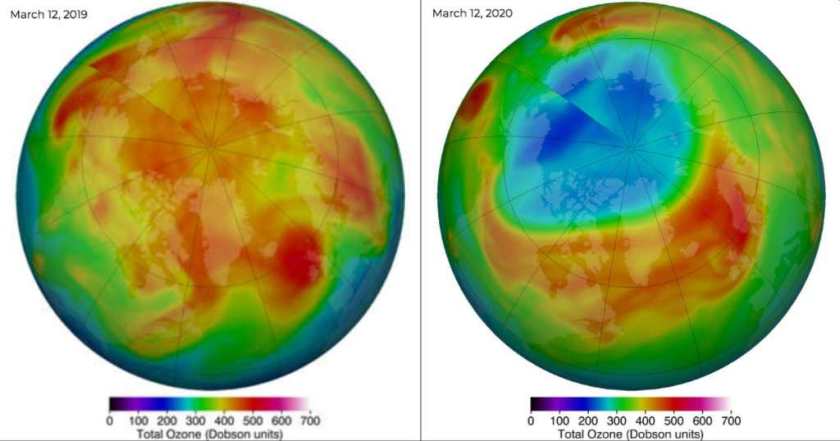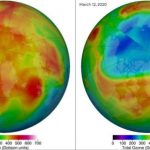The largest Arctic ozone hole ever recorded is now closed, but it has nothing to do with Covid 19 lockdown

By now, we’ve all seen the hundreds of thousands of deaths and millions of jobs losses due to coronavirus pandemic. However, the deadly virus has at least one positive result on the climate change. The largest Arctic ozone hole ever recorded is now closed. However, many scientists are saying that COVID-19 may have nothing to do with it.
The closure was first announced last week by scientists at at the Copernicus Atmospheric Monitoring Service (CAMS), the service implemented on behalf of the European Commission, the “unprecedented 2020 northern hemisphere #OzoneHole has come to an end.”
Despite coronavirus lockdowns leading to a significant reduction in air pollution, the researchers said the pandemic likely was not the reason for the ozone hole closing.
In a reply to a question from Twitter user asking of the closure was due to COVID-19, CAMS replied in a tweet: “Actually, COVID19 and the associated lockdowns probably had nothing to do with this. It’s been driven by an unusually strong and long-lived polar vortex, and isn’t related to air quality changes. You can read more about what’s been going on here: https://bit.ly/39JQRU8”
Actually, COVID19 and the associated lockdowns probably had nothing to do with this. It's been driven by an unusually strong and long-lived polar vortex, and isn't related to air quality changes. You can read more about what's been going on here: https://t.co/Nf6AfjaYRi
— Copernicus ECMWF (@CopernicusECMWF) April 26, 2020
The unprecedented 2020 northern hemisphere #OzoneHole has come to an end. The #PolarVortex split, allowing #ozone-rich air into the Arctic, closely matching last week's forecast from the #CopernicusAtmosphere Monitoring Service.
More on the NH Ozone hole➡️https://t.co/Nf6AfjaYRi pic.twitter.com/qVPu70ycn4
— Copernicus ECMWF (@CopernicusECMWF) April 23, 2020

